Via @AcadMedJournal
ncbi.nlm.nih.gov/pubmed/32028299
From @EricLehrer @DrEmmaHolliday @PennStHershey @penn_state
[tweetorial] on the impact of h-index and m-index on promotion/tenure.
#academicmedicine #MedEd #scholarship
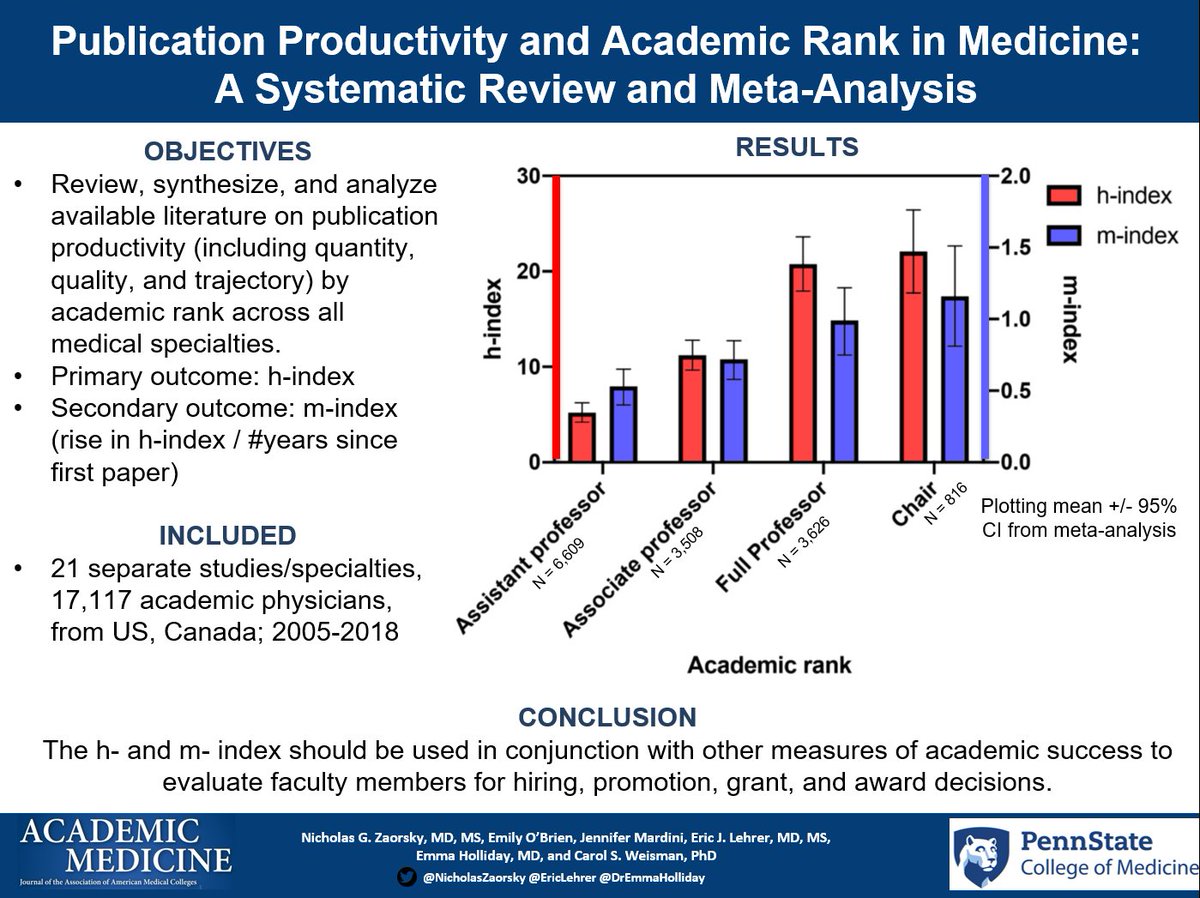
e.g., here are requirements from top tier institution, for non-tenure track and tenure-track faculty.
Historically, some said:
Asst prof = regional reputation
Assoc prof = national
Full prof = international


(congrats, @montypal )
nytimes.com/2020/01/02/us/…
Via @nytimes
Universities often lose gifted junior physicians and scientists.


@PNASNews
pnas.org/content/102/46…
How to calculate: line up one's publications from most cited to least cited. h-index = number of pubs with at least that many citations


Also, if you're a middle author on high impact paper, h-index will still only rise by 1 from this paper.
Other caveats with h-index via @Publons : blog.publons.com/blog/5-things-…
scholar.google.com easiest, IMO.
@AWHarzing
Theoretically, those with highest potential for growth in h-index will have scientific success. Growth can be predicted.
nature.com/articles/48920…
@daniel_akuna @KordingLab
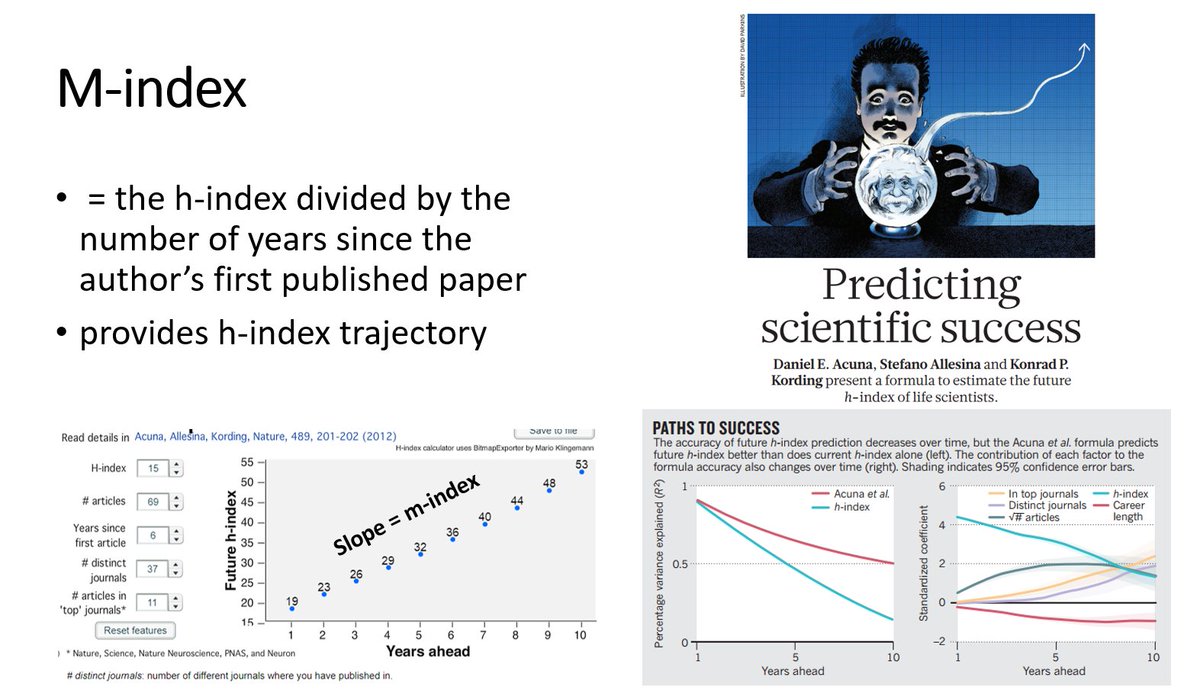

e.g., data for #RadOnc from @DrEmmaHolliday @cd_fuller
via @ASTRO_org
ncbi.nlm.nih.gov/pubmed/27637135



@EricLehrer did statistical wizardry: when the 95% CI wasn't reported, he digitized plots to back calculate from SDs or SEMs.
We included~17K physicians; ~14K in meta-analysis


Mean h-index 5.22 (95% CI: 4.21–6.23, n = 6,609)

Mean h-index 11.22 (95% CI: 9.65–12.78, n = 3,508)
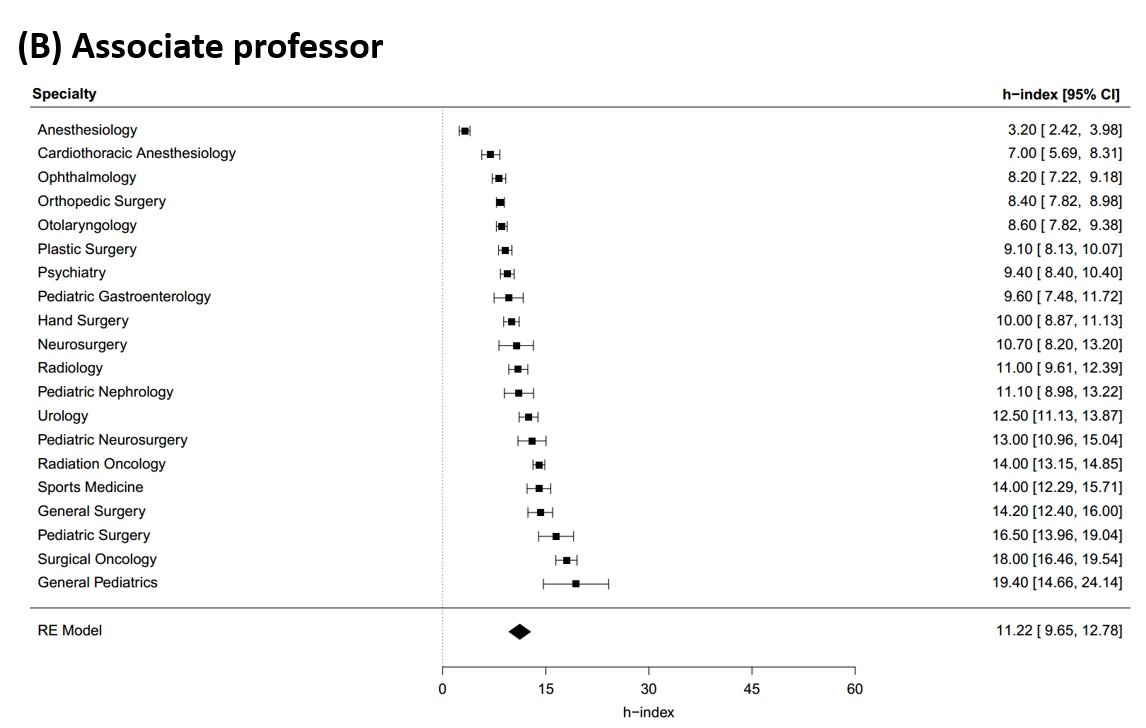
Mean h-index 20.77 (95% CI: 17.94–23.60, n = 3,626)

Mean h-index 22.08 (95% CI: 17.73–26.44, n = 816)



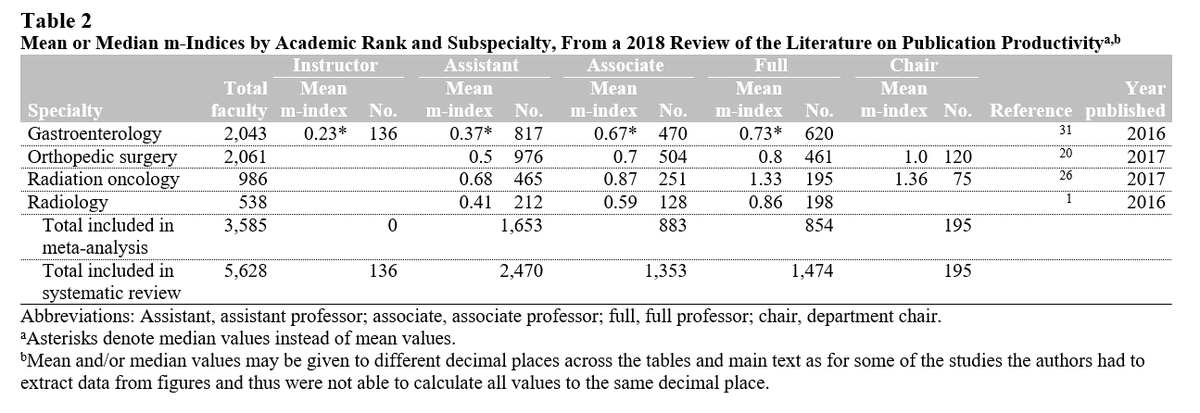
onlinelibrary.wiley.com/doi/full/10.10…


@VPrasadMDMPH
Every time we pursue a research project, it is like buying another lottery ticket. Success can come at any time.
- @barabasi
ted.com/talks/albert_l…

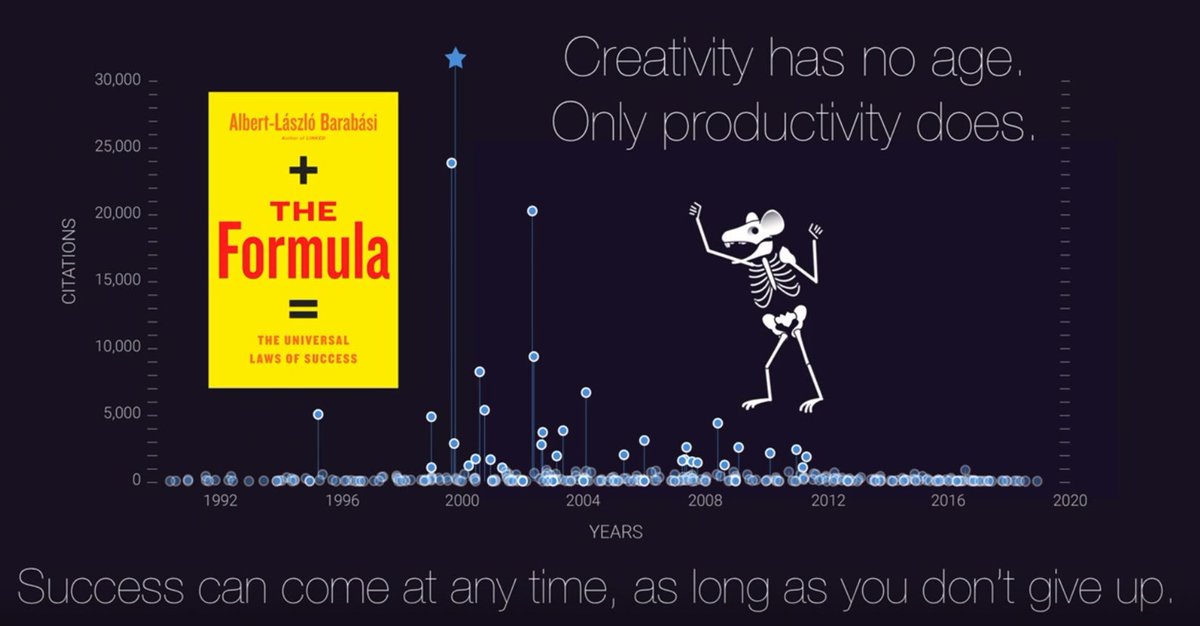

arxiv.org/ftp/arxiv/pape…
@biorxivpreprint
#MedEd #AcademicTwitter











